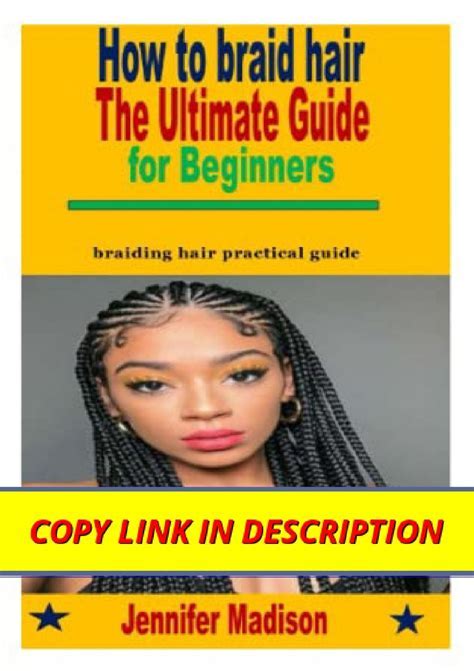Introduction
Braiding hair, with its intricate and versatile styles, has captivated fashion and culture for centuries. From ancient African tribes to modern-day catwalks, braids continue to adorn heads with elegance and beauty. With the advent of modern hair extensions, the possibilities for braiding have expanded exponentially, offering endless options for self-expression.

Key Figures
According to the American Academy of Dermatology, approximately 20% of Americans experience hair loss or thinning by age 50. Braiding hair provides a non-invasive solution, offering the appearance of fuller, thicker hair while concealing hair loss.
Hair Types and Braiding
Understanding your hair type is crucial for selecting the appropriate braiding technique.
- Type 1 (Straight): This hair type is characterized by its fine, smooth texture. It braids well with a variety of methods, but may require additional products for hold.
- Type 2 (Wavy): Wavy hair has a slight curve and can be more prone to frizz. Box braids and cornrows are suitable styles for this hair type.
- Type 3 (Curly): Curly hair is characterized by defined ringlets. It requires gentle braiding techniques and moisturizing products to prevent breakage.
- Type 4 (Coily): Coily hair has a tight, spiraled texture. It is the most fragile hair type and requires extra care when braiding.
Popular Braiding Styles
The world of braiding encompasses a vast array of styles, each with its unique appeal.
- Cornrows: Raised braids that run parallel to the scalp, creating clean lines and a sleek look.
- Box Braids: Similar to cornrows, but squared off for a more blocky appearance.
- Dreadlocks: Sections of hair that have been interlocked and twisted, forming long, rope-like strands.
- French Braids: A three-strand braid that begins at the crown of the head and continues down the length of the hair.
- Dutch Braids: A variation of the French braid that is inverted, creating a raised effect.
Braiding Hair Extensions
Hair extensions have revolutionized the braiding industry, allowing for longer, fuller braids that can be customized to match one’s natural hair.
- Synthetic Hair: Made from artificial fibers, synthetic hair extensions are an affordable option that offers a wide range of colors and textures.
- Human Hair: Human hair extensions are more expensive but provide a natural look and feel. They can be styled and colored like natural hair.
- Ombre Hair: Extensions that feature a gradual transition from one color to another, creating a trendy and eye-catching effect.
Caring for Braided Hair
Proper care is essential to maintain the health and beauty of braided hair.
- Wash Regularly: Avoid over-washing your hair, but cleanse it every 2-3 weeks with a sulfate-free shampoo.
- Moisturize: Apply a leave-in conditioner or hair oil to keep braids hydrated and prevent breakage.
- Use Scalp Treatments: Massaging your scalp with a scalp treatment can promote hair growth and prevent itching.
- Avoid Heat Styling: Excessive heat can damage braided hair. Use a blow dryer on a low setting and limit the use of flat irons.
Pain Points and Motivations
Understanding your customers’ pain points and motivations is essential for effective marketing.
Pain Points:
- Hair loss or thinning
- Frizz or unmanageable hair
- Lack of volume or fullness
- Damage from chemical treatments
Motivations:
- Desire for a fuller, thicker appearance
- Increased confidence
- Cultural or personal expression
- Protection of natural hair from damage
Innovative Applications
Braiding hair has expanded beyond traditional applications, offering new and innovative possibilities.
- Hair Jewelry: Adorn braids with beads, chains, or other accessories for a touch of glam.
- Hair Sculptures: Use braids to create intricate hairpieces, such as flowers, animals, or geometric shapes.
- Braided Wigs: Full or partial wigs made with braided hair provide instant volume and style.
- Braided Accessories: Integrate braids into headbands, scarves, or other hair accessories for a unique and eye-catching look.
Tables
| Braiding Style | Suitable Hair Types | Difficulty |
|---|---|---|
| Cornrows | Type 1-4 | Easy |
| Box Braids | Type 1-3 | Moderate |
| French Braids | Type 1-4 | Easy |
| Dreadlocks | Type 3-4 | Difficult |
| Hair Extension Type | Pros | Cons |
|---|---|---|
| Synthetic Hair | Affordable, versatile | Less natural appearance |
| Human Hair | Natural look and feel | Expensive, requires regular care |
| Ombre Hair | Trendy, customizable | Can be difficult to blend with natural hair |
| Pain Points | Motivations |
|---|---|
| Hair loss or thinning | Desire for a fuller, thicker appearance |
| Frizz or unmanageable hair | Increased confidence |
| Lack of volume or fullness | Cultural or personal expression |
| Damage from chemical treatments | Protection of natural hair from damage |
| Innovative Application | Description |
|---|---|
| Hair Jewelry | Adorn braids with beads, chains, or other accessories |
| Hair Sculptures | Use braids to create intricate hairpieces |
| Braided Wigs | Full or partial wigs made with braided hair |
| Braided Accessories | Integrate braids into headbands, scarves, or other hair accessories |
FAQ
- How often should I braid my hair? It depends on your hair type and the desired style. Generally, it’s recommended to braid your hair every 2-4 weeks.
- Can I braid my hair if it’s damaged? Yes, but it’s important to use gentle braiding techniques and protect your hair from further damage.
- How do I remove braids? Use a wide-toothed comb to gently separate the braids, then wash and condition your hair.
- Can I color braided hair? It’s not recommended as the chemicals in hair dye can damage the braids.
Conclusion
Braiding hair is an art form that transcends time and culture. With the advent of hair extensions and innovative techniques, the possibilities for braiding have become endless. By understanding your hair type, choosing the appropriate style, and caring for your braids properly, you can embrace the beauty and versatility of this ancient tradition.
